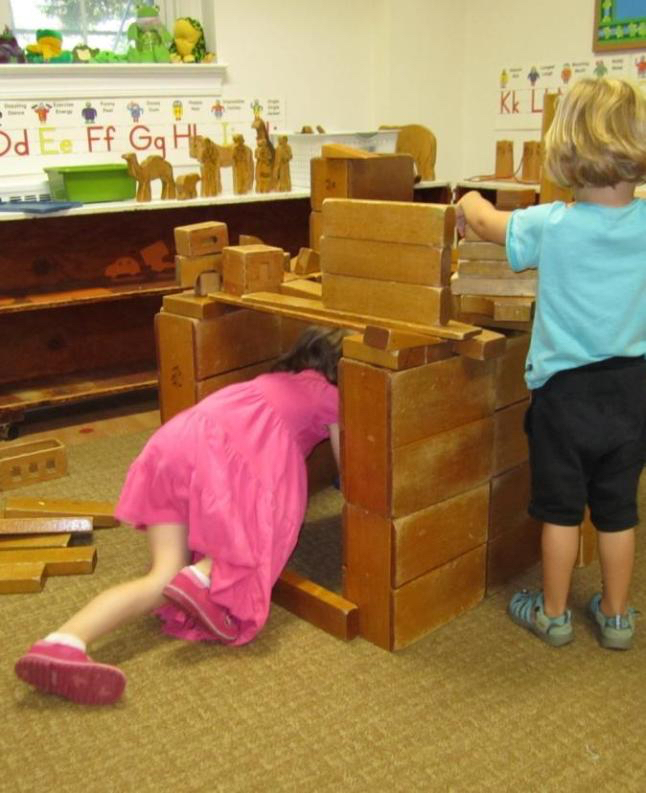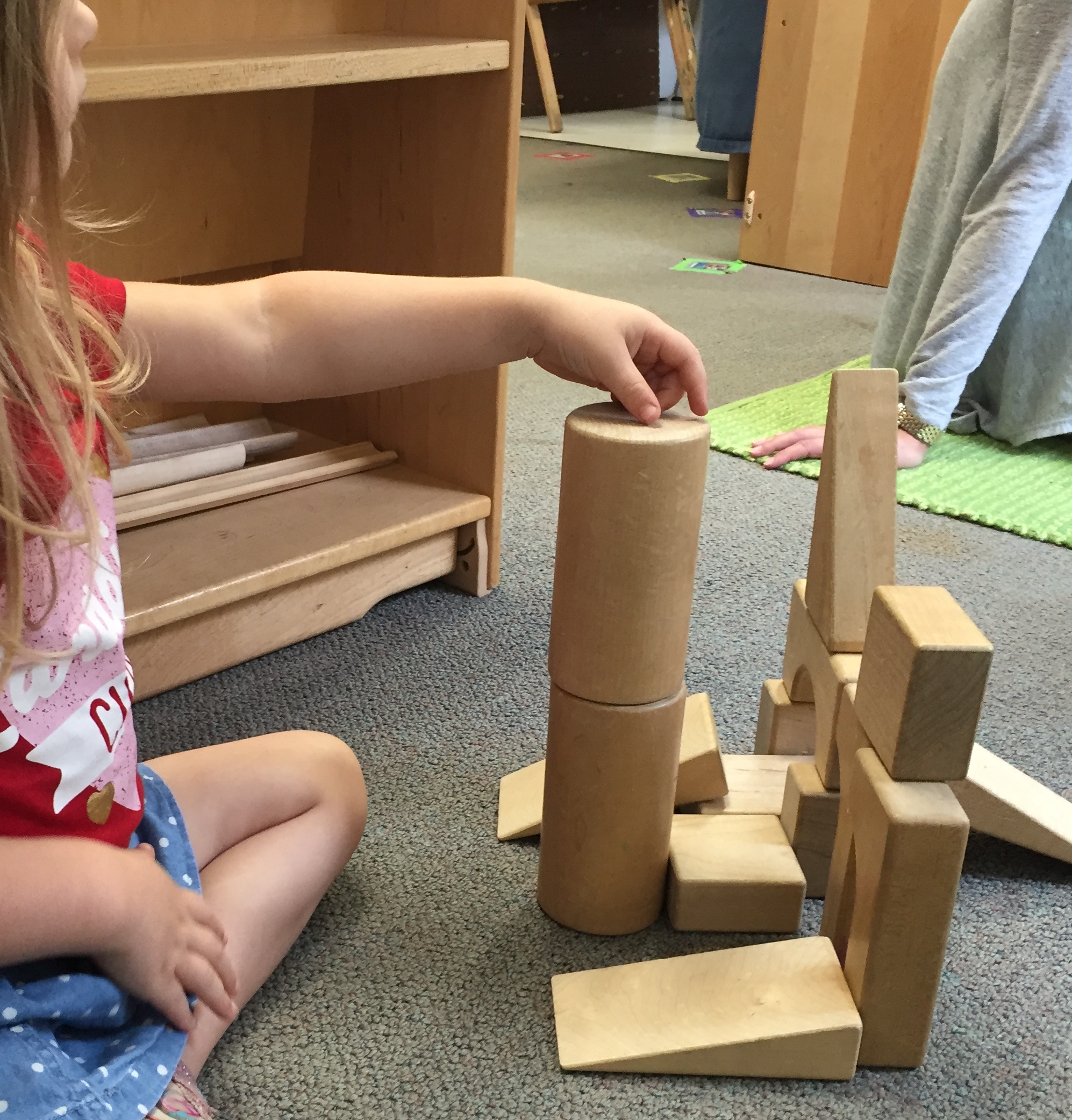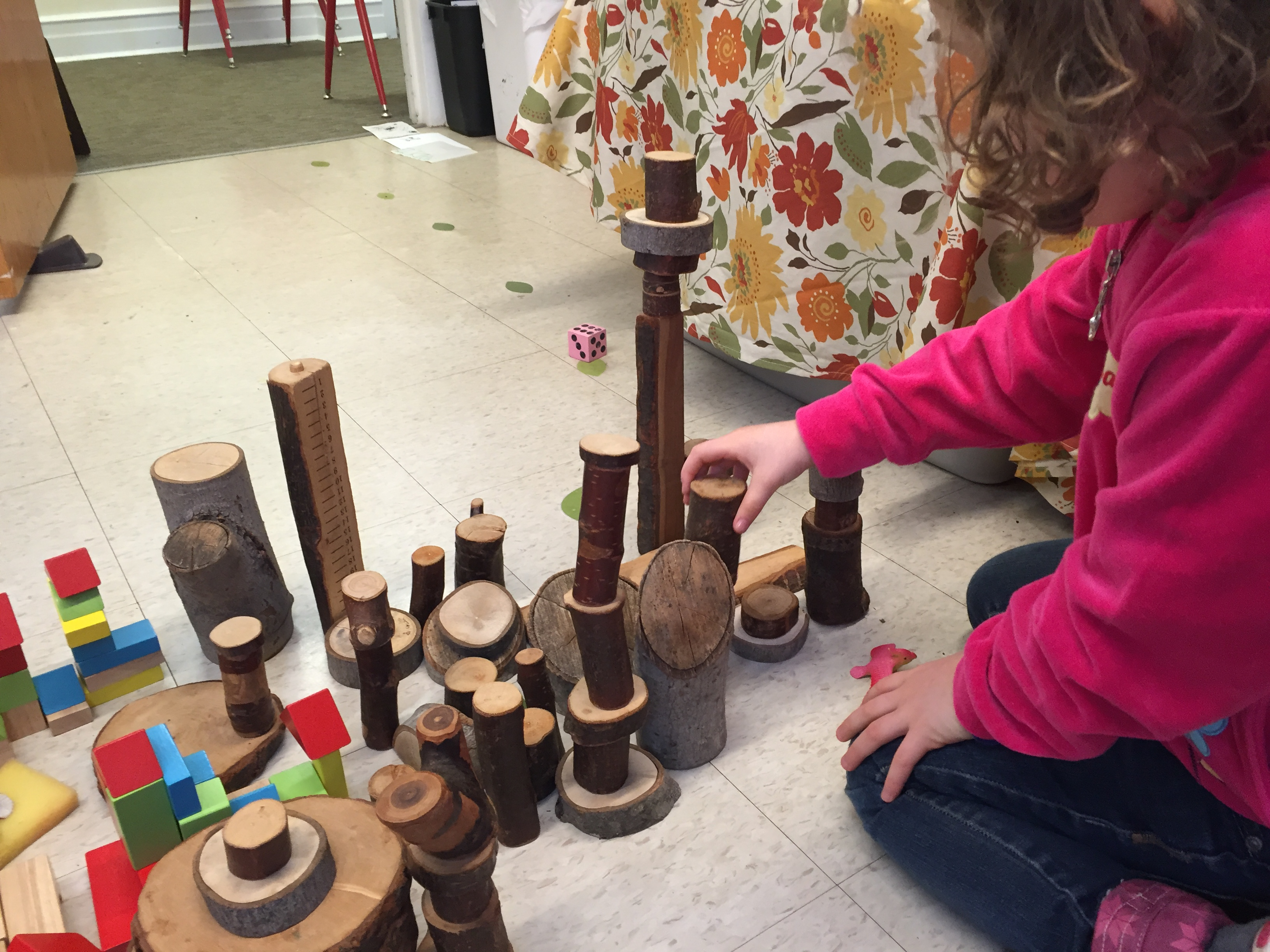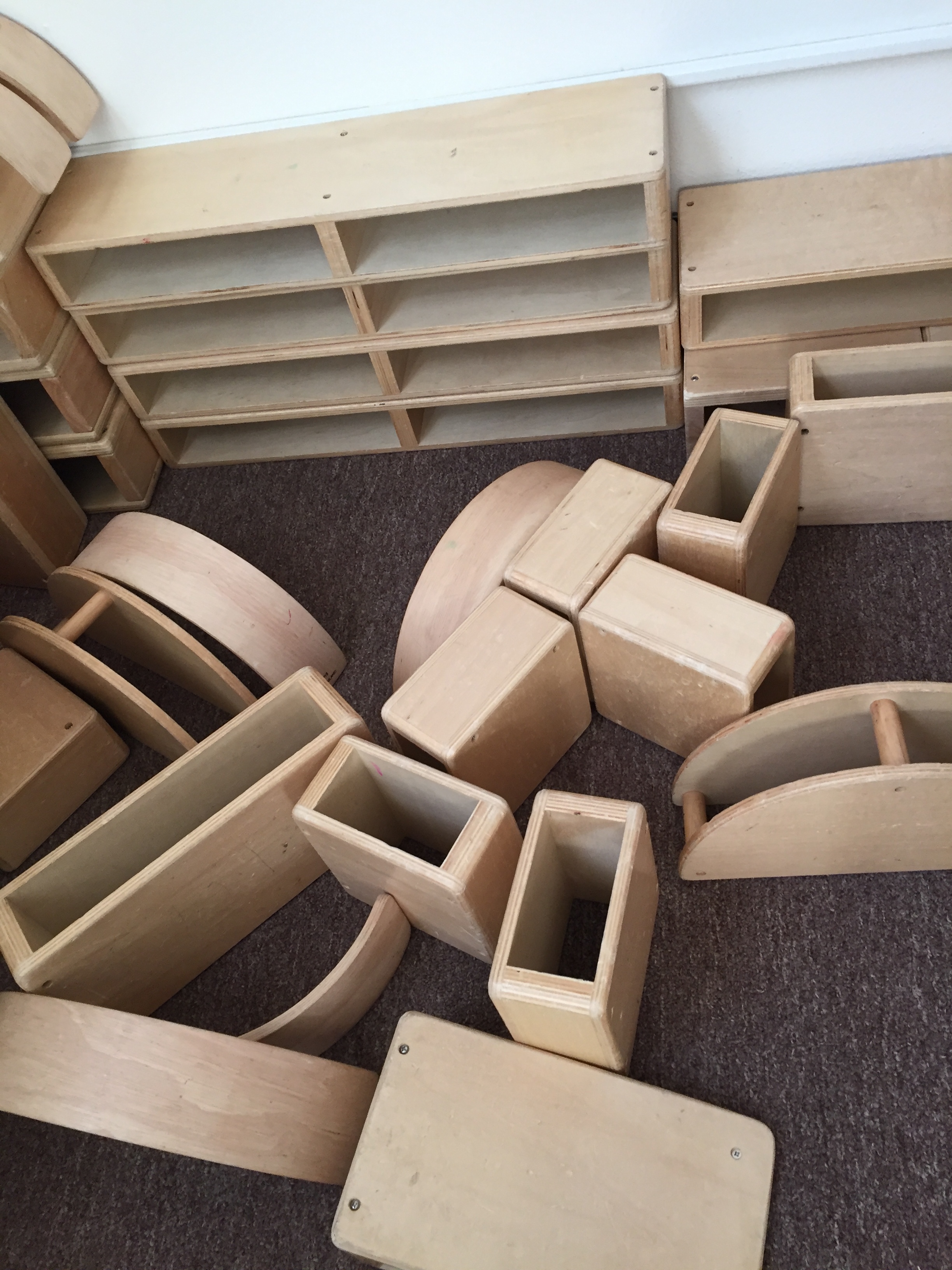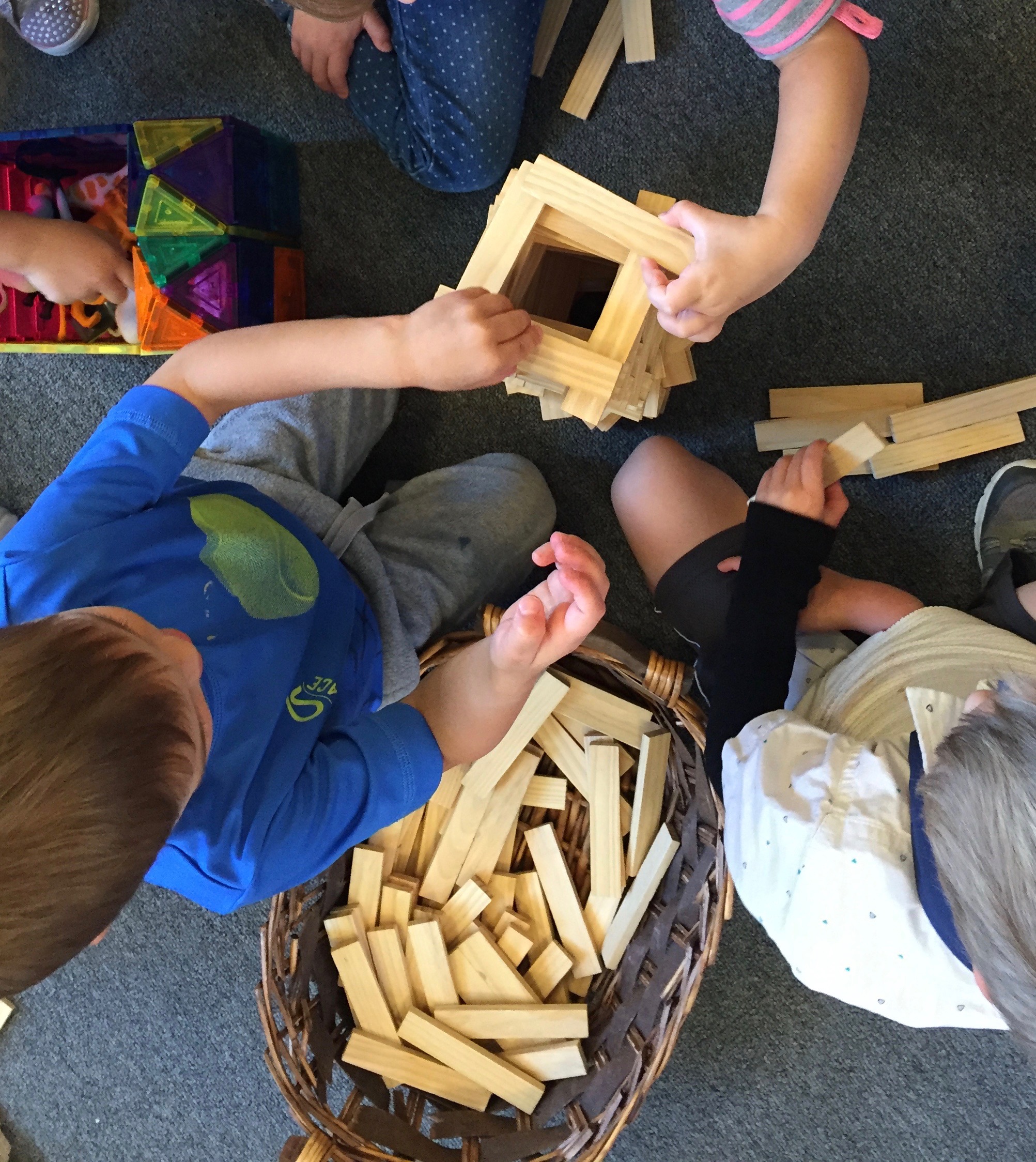What happens in your block area?
By Peggy Ashbrook
Posted on 2019-10-31

When playing and building with blocks, children experience the way the properties of matter, shape, weight, and proportionality affect balance, stability, and position within their structures. Beginning with open exploration, children measure as they build with blocks (Chalufour and all). How many blocks are “enough” for children of preschool age?

“Blocks” can mean interlocking blocks which are counted as a fine motor activity in the Environmental Rating Scales. The ERS guidance, for family child care programs, on enough Unit blocks and large hollow blocks of any material, and homemade blocks of cardboard or plastic, says “many” blocks should be accessible daily. ““Many” means enough blocks and accessories for each age group to use the materials without undue competition.”

For preschool programs with children ages 2.5-5 years old, the guidance is to have “Enough space, blocks, and accessories accessible for three or more children to build at the same time,” and the three children must have enough blocks to build sizable structures independently. If your program has fifty blocks, that “is enough for a good start” (Van Meeteren & Escalada).
In interviews eight educators give recommendations on providing enough time for block play for children to truly focus and engage with materials, and guidance on when educators should interject themselves into children’s play, to encourage the next level or stage of play but not disrupt it (Community Playthings).
Block play involves children in collaborating, negotiation, and compromising with peers as they create structures, supporting their development of engineering habits of mind (Counsell). They often work to find new solutions as they problem solve (Alexander). School Director Jane Clarke says teachers need to “create an atmosphere and a culture in the classroom, where the children know that their ideas are important and that the adult in the classroom is going to support and guide them into further exploring the ideas that they have” (Community Playthings).
Consider this gallery of block play settings and reflect on the block play available to children in your program to see how you can identify children’s learning or enhance it.
Resources
Alexander, Nancy P. All About Block Play. EarlyChildhoodNews. http://www.earlychildhoodnews.com/earlychildhood/article_view.aspx?ArticleID=397
Community Playthings. 2018. The Role of the Teacher in Block Play. http://www.communityplaythings.com/resources/articles/2018/the-role-of-the-teacher-in-block-play
Counsell, S., and L. Escalada, R. Geiken, M. Sander, J. Uhlenberg, B. Van Meeteren, S.Yoshizawa, B. Zan. 2015. Engineering Habits of Mind. From STEM Learning with Young Children: Inquiry Teaching with Ramps and Pathways. New York: Teachers College Press.
Chalufour, I., C. Hoisington, R. Mo- riarty, J. Winokur, and K. Worth. 2004. The science and mathematics of building structures. Science and Children 41 (4): 30–34. https://www.nsta.org/publications/browse_journals.aspx?action=issue&thetype=all&id=6416
NAEYC. The March 2015 issue of Young Children focuses on block building in early childhood. https://www.naeyc.org/resources/pubs/yc/mar2015
Van Meeteren, B. , & Escalada, L. (2010). Methods & Strategies. Science and literacy centers: This win-win combination enhances skills in both areas. Science and Children, 47(7), 74. https://www.nsta.org/publications/browse_journals.aspx?action=issue&thetype=all&id=8201
Van Meeteren, B. & Zan, B. (2010, November). Revealing the work of young engineers in early childhood education. Early Childhood Research and Practice. Retrieved from http://ecrp.uiuc.edu/beyond/seed/index.html
Wolfgang, Charles, Laura Stannard, and Ithel Jones. 2001. Block Play Performance among Preschoolers as a Predictor of Later School Achievement in Mathematics. Journal of Research in Early Childhood Education. 15(2): 173-180.
Zan, B. & Geiken, R. (2010). Ramps and pathways: Developmentally appropriate, intellectually rigorous, and fun physical science. Young Children, 65 (1), 12-17.
Disclaimer: The views expressed in this blog post are those of the author(s) and do not necessarily reflect the official position of the National Science Teaching Association (NSTA).




